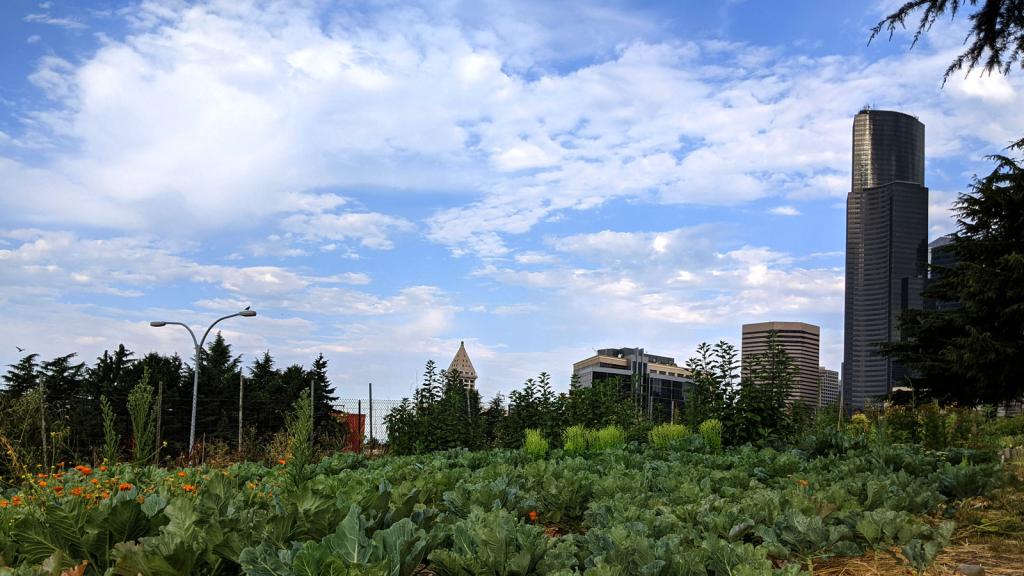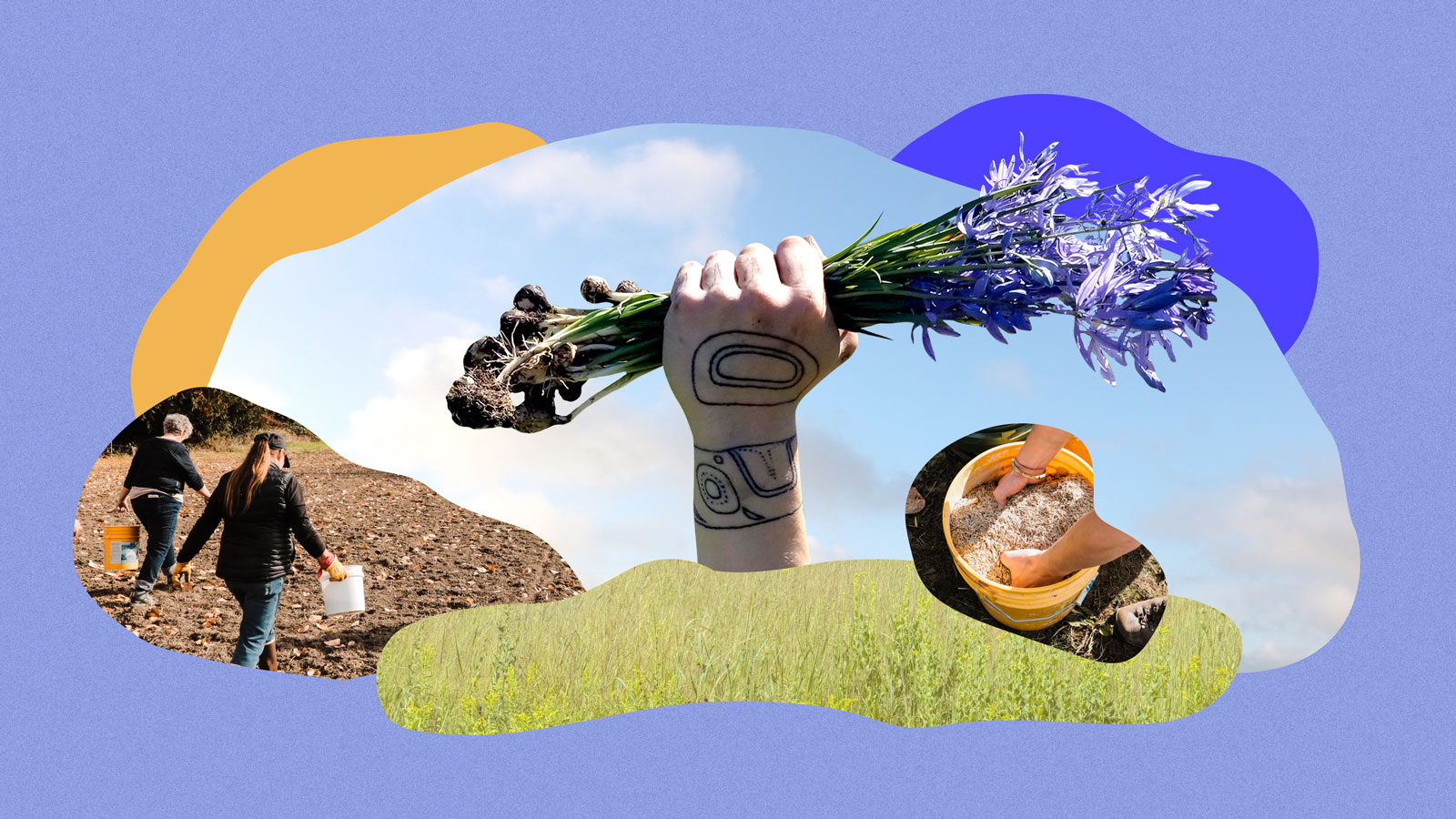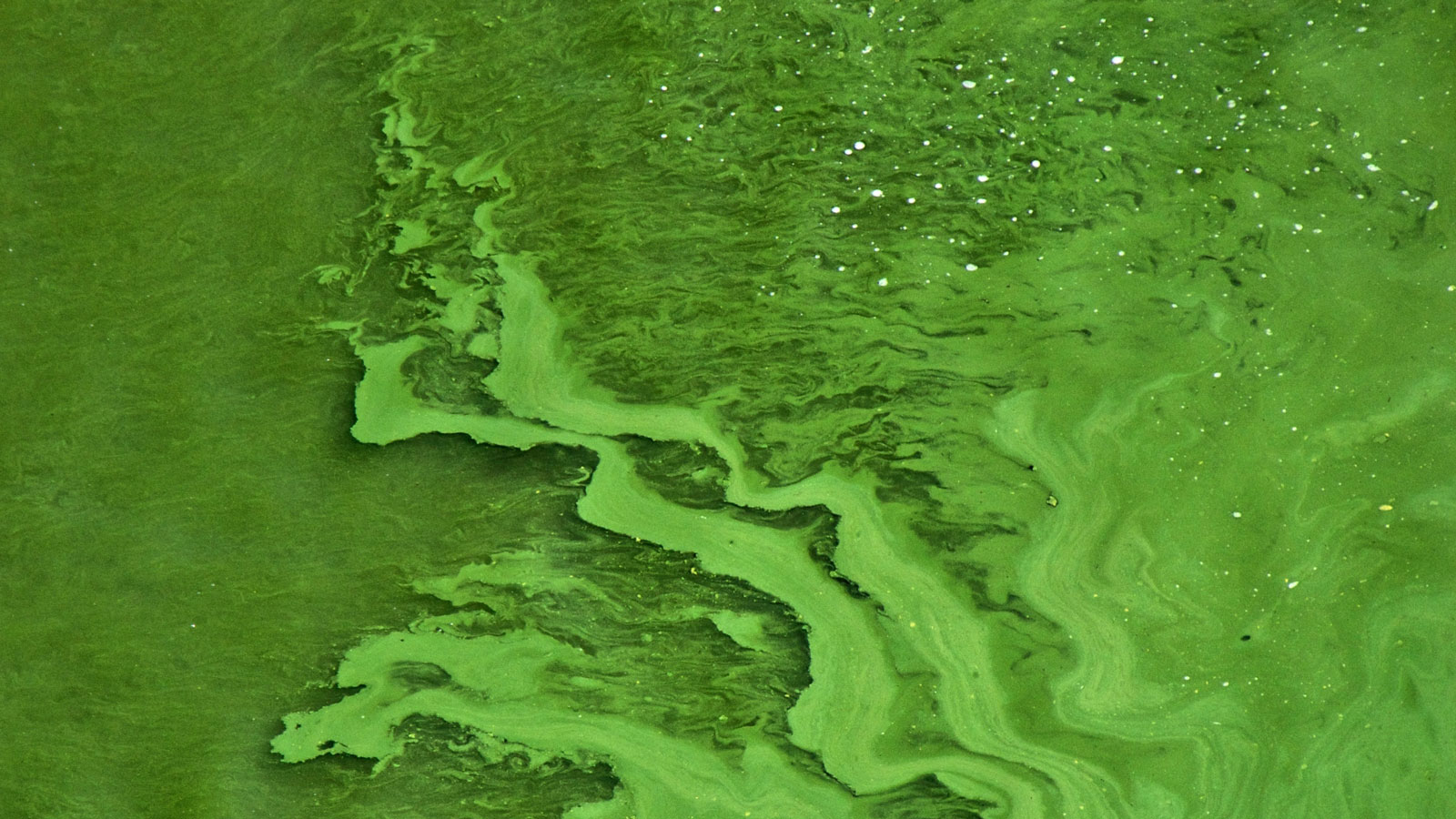As our climate changes, so will our diets. Fix’s Future of Food Issue explores that reality through the lens of foods that show what sustainable, equitable, and resilient eating could look like. Try them yourself with the recipes in our Climate Future Cookbook.
The state of Washington resembles a fist. If you hold your thumb up alongside your clenched fingers, it becomes the Olympic Peninsula, with the space in between forming Puget Sound. Seattle sits maybe an inch below the knuckle of your pointer finger. At the tip of your thumb, you’ll find a place called Sequim.
The town sits between the Salish Sea and the Olympic Mountains, with stunning views of both. It’s a small, quaint place, where many roads bear the names of families who still live there. Notably, Sequim proudly declares itself the lavender capital of North America. The number of people there nearly quadruples every July when 30,000 visitors from all over the world descend on the annual Lavender Festival, where streets overflow with purple-tinged ice cream, lattes, candles, soaps, and all manner of baked goods. But the fragrant botanical’s history in Sequim only dates to the 1990s, when civic leaders sought to preserve the town’s agricultural character by cultivating an agritourism industry. Long before that, the landscape was blanketed for millennia by another flower: camas.
ƛ̕əw’cən Mackenzie Grinnell, a member of the Jamestown S’Klallam Tribe, recalls stories from his grandmother — who heard them herself when she was young — about being able to stand on a hill and look out at a sweeping expanse of the blue and violet flowers stretching to the Salish Sea a mile away.
“During May, it would be hard to tell when the camas stopped and where the water started,” Grinnell tells me. “It was just these rolling hills of camas, right down to the water’s edge.” He adds with a wistful tone, as if seeing it in his mind’s eye, that it was beautiful.
Before European settlers arrived in the late 1700s, prairie habitat covered some 180,000 acres of western Washington. It was maintained by Native communities like the S’Klallam (a Salish word meaning “strong people”), whose lands extended from the forested mountains to the clam- and salmon-rich waters. Blue camas, a common prairie flower, grows from a starchy bulb that was once a staple carbohydrate in the diets of the S’Klallam people and other neighboring tribes.
Today, less than 3 percent of the native prairies that once covered the state remain. The open grasslands that sustained Indigenous communities for millennia were, in the eyes of settlers, land to be turned into farms, pastures, and towns. Development relegated the prairies to fragmented pockets, endangering native plants like the golden paintbrush, pollinators like the Taylor’s checkerspot butterfly, and some species of birds and mammals. Camas all but faded away as a food source.
That’s beginning to change.
Grinnell is the coordinator for the Jamestown S’Klallam Tribe’s Traditional Foods and Culture Program which, among other things, is attempting to reestablish camas and other prairie plants on the Olympic Peninsula and reintroduce them to local diets. The Jamestown Tribe isn’t alone in such efforts. All over the country and around the world, Indigenous communities are striving to reestablish traditional diets and cultural practices by restoring the ecosystems that sustain them. That kind of holistic approach offers a host of ecological benefits in addition to the added food security and cultural significance native crops can bring. Still, two centuries’ worth of destruction and disruption can’t be reversed within a few months or years. Grinnell and other leaders see this essential work as an investment in the future.
“Our traditional foods take decades to grow, and harvesting them takes a lot more effort than a garden or a farm,” Grinnell says. He and others in the tribe are beginning the work now so they can one day bring back a traditional camas feast. “We have a lot of responsibilities around our foods and making sure they don’t go away,” he says.
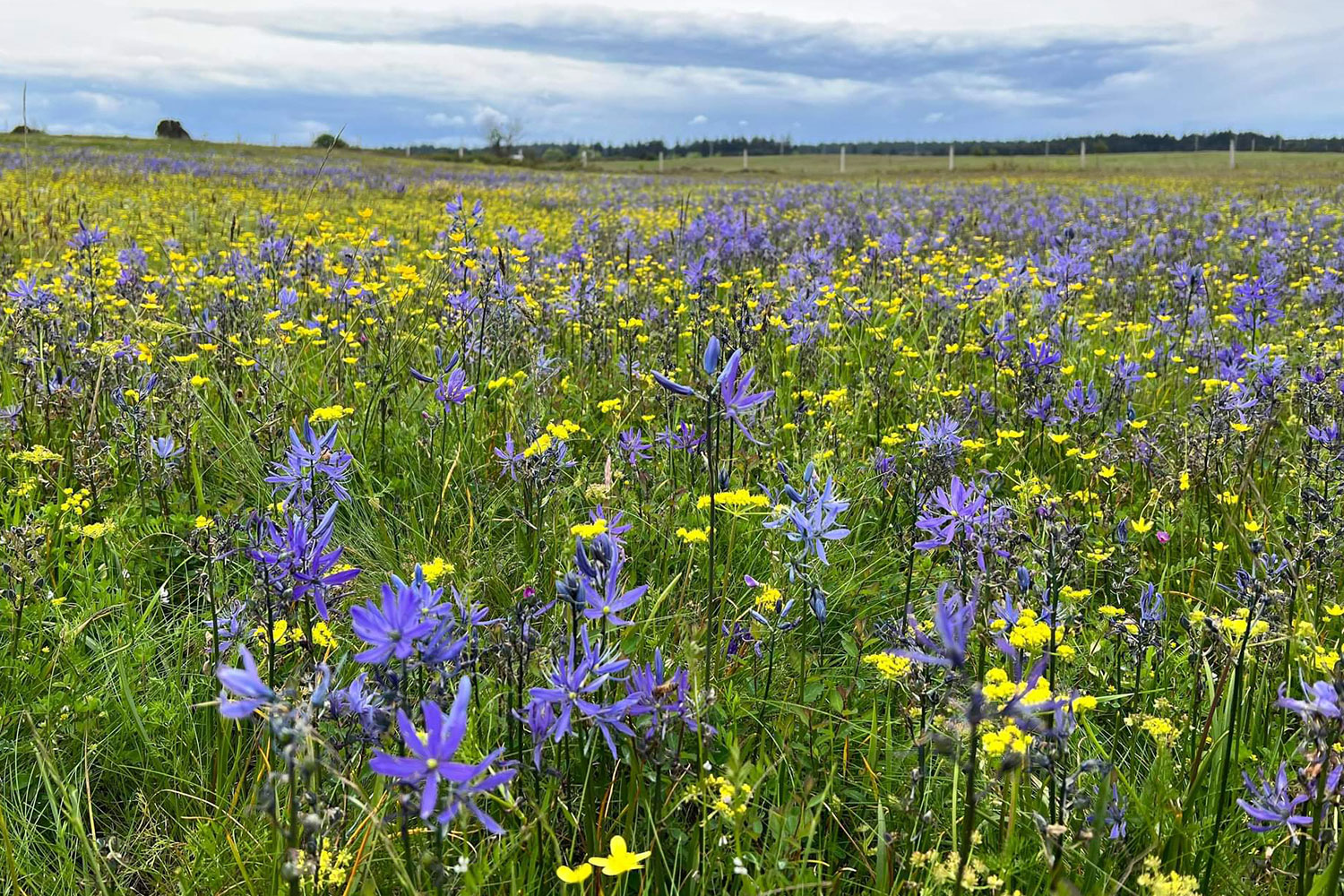
The history
The S’Klallam people have lived on the Olympic Peninsula for over 10,000 years. Today, they’re divided into three federally-recognized tribes: the Lower Elwha Klallam, the Port Gamble S’Klallam, and the Jamestown S’Klallam (known in Sequim simply as “the tribe,” and the second-largest employer in the county).
Unlike the other S’Klallam bands, the Jamestown Tribe has no reservation. After the signing of the Point No Point Treaty in 1855, settlers began encroaching on what the treaty describes as the “usual and accustomed grounds” of the S’Klallam, Chimakum, and Skokomish people. About 20 years later, a group of displaced families realized that remaining on their homeland would require embracing the European approach of land ownership. Under the leadership of tribal citizen Lord James Balch, they pooled $500 in gold and bought 210 acres along the Strait of Juan de Fuca. It became Jamestown Village, which is now part of Sequim. (It’s also where my partner was raised, although his family is not Indigenous. We visit the area often, and are friends with some of the folks interviewed here.)
[Read more: Learn about the current-day landback movement]
Lisa Barrell, a tribal elder who lives on one of the original properties at Jamestown Beach, grew up gardening, gathering, and preparing food with her mother. “According to the world, she was the best cook there was,” Barrell says with a chuckle. She absorbed a lot about ancestral foods from her mother, and later in life sought knowledge from elders in other tribes. She began hosting dinners, skillshares, and other cultural activities for the Jamestown Tribe.
In 2017, the tribe surveyed its 500-odd citizens to determine their needs and priorities. Barrell was excited to see that most wanted to learn more about their ancestral foods and cultural practices. The tribe decided to seek a grant to start a traditional foods program, and asked her to lead it. “To do what you’ve always been doing for a job — so cool,” she says.
The Centers for Disease Control and Prevention provided a four-year grant for the program in 2018 (it was reupped for another five in 2022), to improve the health and wellbeing of tribal members by increasing access to nutritious and culturally relevant foods — like camas.
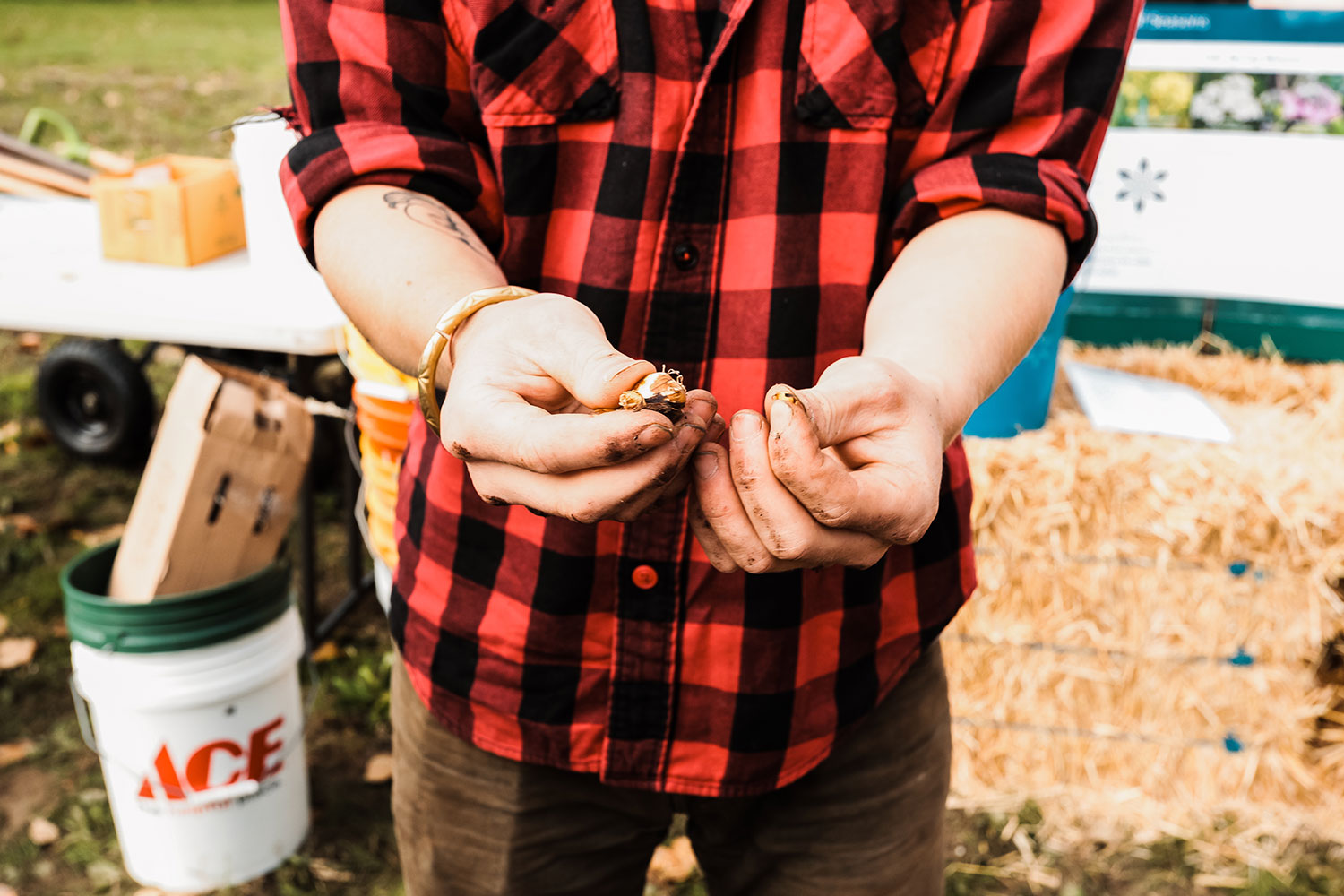
The camas plant
Blue or common camas — not to be confused with “death camas,” a similar plant with cream-colored flowers — stands roughly knee-high. Its small bulbs range from about the size of a garlic clove to an entire head. Raw, a blue camas bulb is almost bone white and has the texture of a water chestnut. Slow roasting brings out a caramel color and a sweet flavor that some have compared to a cooked pear.
The bulbs contain inulin, a prebiotic fiber that feeds the gut flora. Eat it raw or cook it too hastily and it’ll give you major gas. That’s why camas is traditionally slow-cooked over one to three days in an earth oven — a pit lined with red-hot rocks — to let the inulin break down.
For Grinnell, health is one reason for urgency behind restoring prairie plants. The inulin in camas can improve digestive health and control diabetes. “We didn’t have diabetes before the 1940s,” he says. “It didn’t exist in Native communities until we started getting commodity foods. Then we got diabetes, we got heart disease, and now we’re at the top of the list in those numbers.” He believes restoring an ancestral diet will help address those ills.
In 2019, Barrell and Grinnell secured a 1.5-acre parcel nestled next to the popular Discovery Trail, across from what’s now the tribe’s Dungeness River Nature Center, to be their first prairie site. It will be a cultural ecosystem where, in addition to restoring camas and other plants to the area, they plan to preserve and practice tribal knowledge of how to manage prairies.
They sourced seeds and bulbs from a variety of locations, including transplanting swaths of sod from a small stretch of nearby prairieland slated for development — one of the last intact prairies in the area, Grinnell says. Before the site was paved, the group rescued bunches of chocolate lily (or rice root), harvest brodiaea, and lomatium — but no camas. At the time, the once ubiquitous plant was nowhere to be found in Sequim. “I kind of felt like it was a mission to find this food and make it available,” Barrell says.
She and Grinnell visited other tribes and prairie preservation sites, obtaining a variety of camas seeds and bulbs. This, Grinnell points out, harkened back to pre-colonial Indigenous trading practices, and how tribes influenced the land by maintaining the genetic diversity that makes prairies so resilient. “We were always moving seeds. We were always moving bulbs,” he says. “We would go to the San Juans, we’d go to Vancouver Island, to Whidbey Island, and we’d go around the peninsula and harvest camas and trade.” So, that’s exactly what the Traditional Foods and Culture Program did.
The strategy
Although they are planting camas and other flora to reestablish the prairie, Grinnell says they don’t see themselves as farmers. In fact, when the North Olympic Land Trust awarded the Traditional Foods and Culture Program its 23rd-annual Farmer of the Year Award last year, the tribe asked that the word “farmer” be replaced with “nəxʷsƛ̕əy̕əkʷáʔnəŋ,” a S’Klallam word meaning gatherer. The goal is to establish something akin to Grinnell’s grandmother’s recollection of a field of blue, dense enough to be mistaken for a body of water. Until that happens, camas won’t be ready for harvesting.
One of the biggest challenges to making that vision a reality is controlling non-native grasses. “You might have an area that somebody’s worked on for 20 years trying to restore, but there’s still always going to be some non-native plants,” says Samantha Martin, a restoration ecologist on Orcas Island in the San Juans. “We can’t go back in time.”
[Read more: How eating invasive species could be a boon to ecosystems]
Controlled burns are one strategy Grinnell hopes to use to help native grasses prevail. But that too presents a challenge since the site is surrounded by houses, not the old-growth forests that once bordered the prairies. “We’ve had about 200 years of fire suppression and what we call fire exclusion,” Martin says. That’s given non-native plants, stray agricultural seeds, and encroaching trees plenty of time to put down roots. Another problem: When predators were killed off, deer populations exploded, and tender prairie plants like camas make prime grazing. “A lot of the lowland prairies that are surrounded by development need quite a bit of ongoing tending,” Martin says.
The Jamestown Tribe began tilling, weeding, and planting its site in 2019, and likely won’t reap the benefits until 2029 or so. The ecosystem will take at least that long to establish itself before it can be harvested ethically, which according to the tribe means keeping the ecosystem in balance by not taking too much. Restoring Native foods means restoring entire habitats until there’s enough to forage sustainably. And that, Grinnell says, is the work of a lifetime.
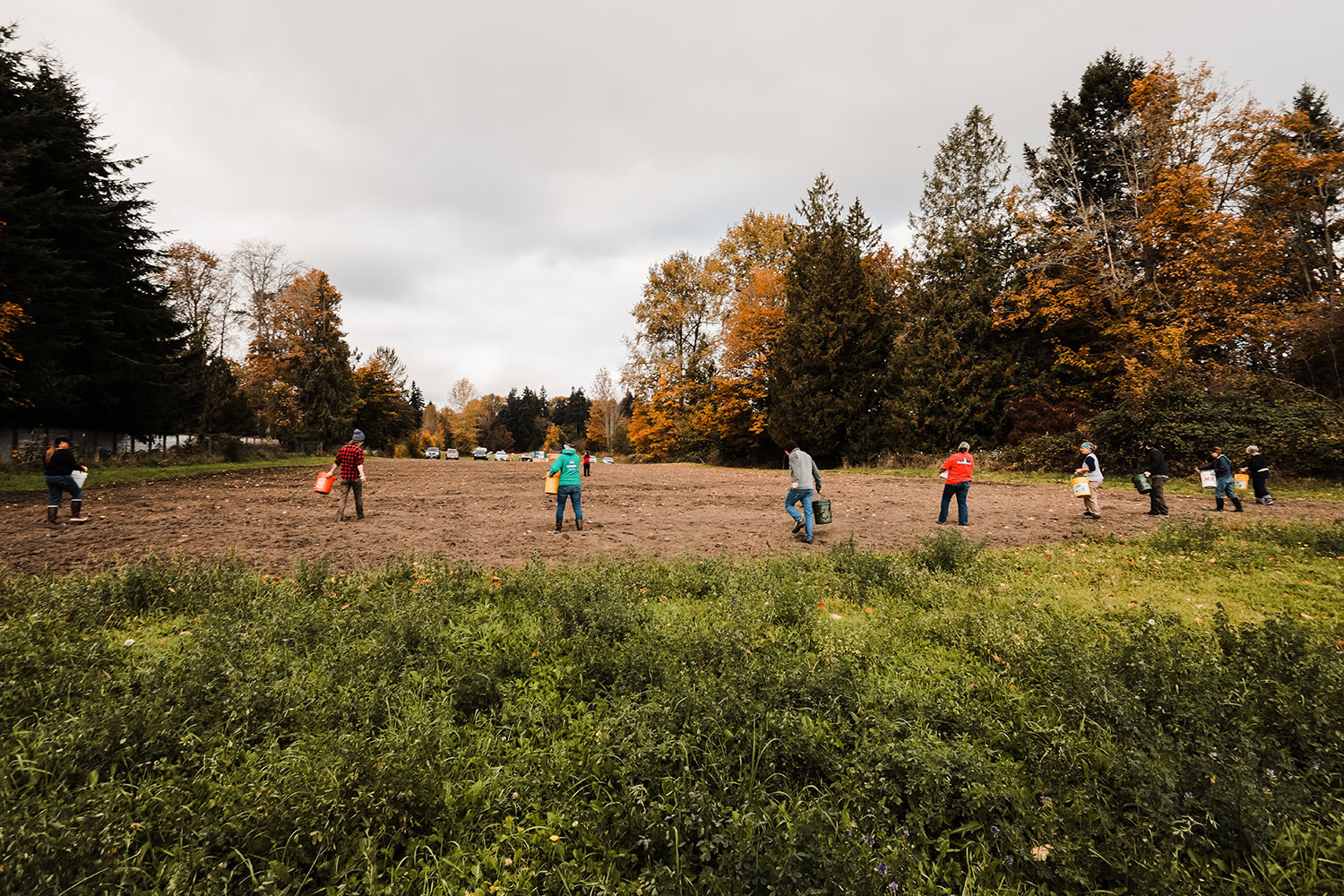
The challenges of today
The Indigenous peoples of North America long used fire to manage land and harvest food, says Don Hankins, an environmental geographer and traditional cultural practitioner of Plains Miwok descent (who was featured on the 2022 Grist 50). He is among those leading an effort to restore Native land practices in California, where the Miwok and other tribes once set routine blazes to clear underbrush and then collect foods like grasshoppers and acorns. “Almost every ecosystem has food in it, in California — if you know what you’re looking for,” Hankins says.
Those traditional foods, including acorns and cereal grasses, have much the same story as camas — a story played out across the country and the world as Native ecosystems and practices succumbed to colonialism and industrial farming. Though Hankins and others are working to restore the conditions that will let them thrive, there isn’t yet enough to make them a major source of food.
“In the future, in my mind, we have to be thinking about those different types of foods,” Hankins says, pointing out that in order to feed a growing human population, we need to be looking outside of current agricultural practices. Grasshoppers, for instance, represent an overlooked source of protein far less resource intensive than farmed livestock.
[Read more: How crickets could transform meat-intensive pet food]
But Hankins also worries that the land won’t be able to support widespread adoption of foraging, even with the holistic land management practices that many tribes hope to return to — and that Indigenous peoples will, once again, lose access to their lands and foods if others embrace the approach. He offers the cautionary tale of beargrass, a western perennial traditionally used for weaving. Around 20 years ago, the floral industry discovered that it made a pleasant addition to bouquets and began collecting it. “That had a negative impact on tribal weavers being able to find beargrass to use for traditional uses,” he says.
Similar concerns make the Jamestown S’Klallam Tribe hesitant to share traditional knowledge of the landscape, as well as its resources. A school in nearby Port Townsend reached out to Grinnell recently to suggest hosting a traditional camas pit bake to teach students about Indigenous foodways. “I was like, ‘That’s great. But we don’t have enough camas to feed our own people,’” he says. Instead, he recommended sunchoke — another inulin-rich root vegetable native to North America and available in some supermarkets.
“This was a hard lesson for me,” Barrell says. “You know, you want to share your knowledge, but you can take people out and they will go back and clear out your gathering spot.” While native crops remain scarce, the tribe’s priority is restoring them for its own citizens.
Barrell has another fear: the changing climate, and what it will mean for the tribe’s food sources. “I always thought, ‘Oh well, we’ll be okay. We can always go gather, we can get our seafood.’ But that’s not necessarily the case,” she says. Salmon populations are declining, and the tribe must constantly monitor toxicity levels before harvesting clams. That’s why she sees the prairie as a form of climate and food resilience. In her mind, reintroducing camas and other plants means reviving another food source — one that may be more resilient to extreme weather and other climate shifts.
The rich genetic diversity of prairies helps them adapt to varying climatic conditions. They’re far more drought-tolerant than forests, but can also thrive in wet environments. In other parts of the Olympic Peninsula, like Quinault, prairies exist in almost swamp-like conditions — whereas Sequim famously lies in the desert-like rain shadow of the Olympic Mountains.
In addition to being resilient, prairies can help mitigate climate change. A 2018 study by the University of California, Davis found that grasslands can sequester as much carbon as forests — and, because trees store so much carbon above ground, increasingly common wildfires threaten to turn that sink into a source of CO2. Prairies, with their perennial roots and deep stores of carbon, may in fact be far more reliable.
[Read more: How perennial crops offer an alternative to extractive, industrial agriculture]
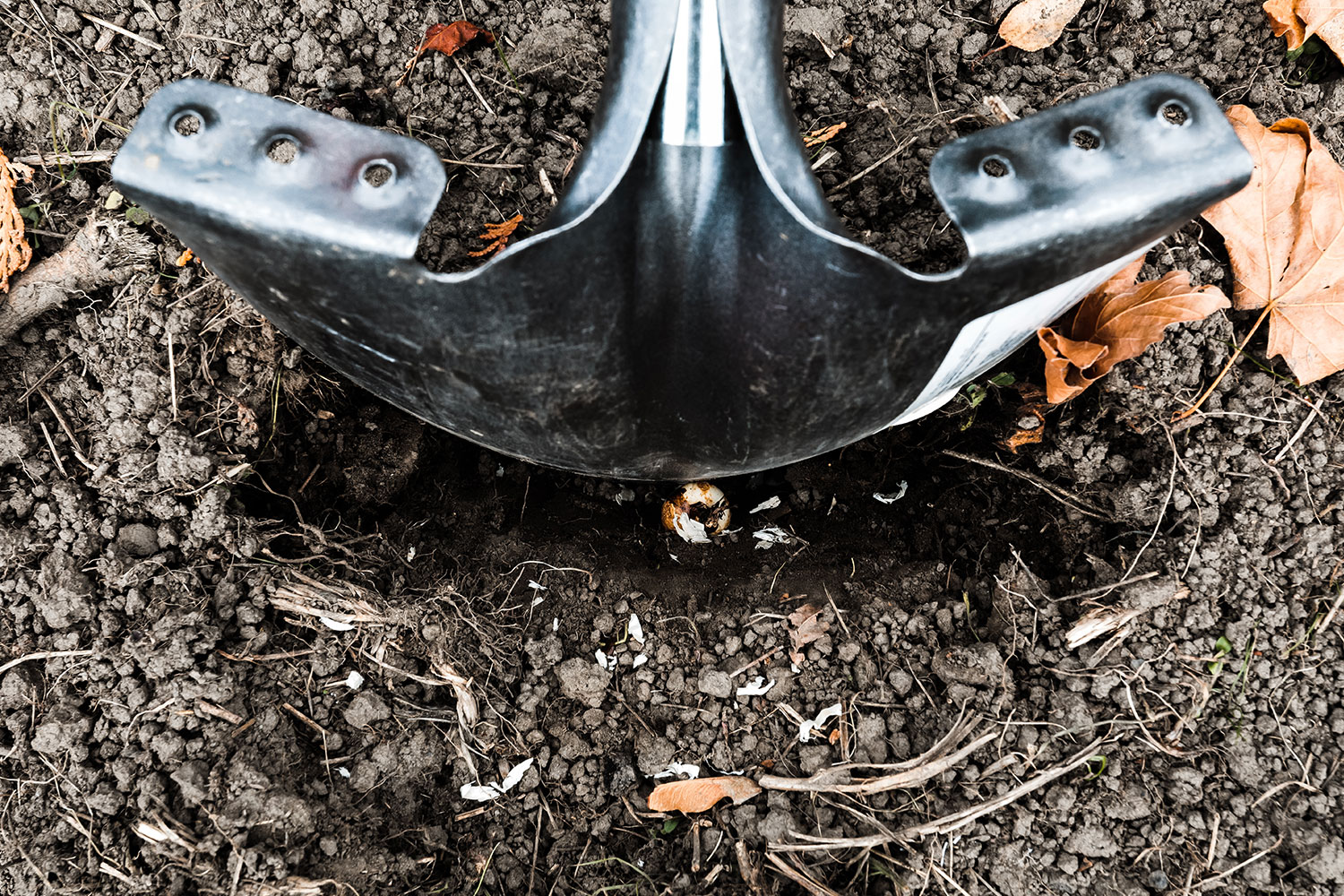
The once and future camas
Back when camas was plentiful, it wasn’t eaten only at harvest time. It was often made into cakes that were dried in the sun, then enjoyed throughout the winter. Although there isn’t yet enough to preserve, Barrell ultimately plans to freeze-dry roasted camas so it’ll last as long as 20 years — and in the meantime, she’s experimenting with freeze-drying other traditional foods like salmon and berries. In the back of her mind is always what the tribe would eat in the event of a disaster. “That’s a driving force for me — feeding my people,” she says, then adds, “Good thing we have a small tribe.”
If the ultimate vision is self-sufficiency, the short-term vision, for Grinnell, at least, is bringing the entire community aboard to help get there. “We don’t have enough people and enough time to even bring this prairie back as quickly as we want to. It takes so many hands,” he says. He’d like to engage more non-Native volunteers to help maintain the 1.5-acre prairie, and even establish prairie sites on their own land. And his hope is that they’ll give the tribe priority over the harvest.
Prior to colonization, the Native residents of the peninsula would fill 14-person canoes with camas, visiting different harvest and trading spots. “If everyone can plant a prairie in their backyard and in 10 years, everyone harvests 10 bulbs from their prairie and gives them to the tribes, we’ll be at that capacity of filling up a whole canoe,” he says. He believes this kind of participation could be mutually healing, by making non-Native people a part of restoring the ecosystems their ancestors may have played a part in destroying. “Love camas, love all these things, and then give it to the people who it’s been taken from,” he says.
That idea might just take root. About 30 miles to the north on the San Juan Islands, Samantha Martin is one of a small group of folks who launched the Camas Club, an online community united behind the goal of ecosystem restoration. The platform allows gardeners, volunteers, and landowners — most of them white — to ask questions, share tips, and document progress as they attempt to re-wild their yards or other green spaces. Most folks are driven by a desire to see prairies and pollinators return, Martin says, and have little interest in eating plants like camas. She believes a lot of folks would happily share their bounty.
“I think there are a lot of just bighearted people out here that would want to share, and realize that the Coast Salish people really got a raw deal,” she says.
Still, others in the community may be less quick to turn over their land to restoration projects, or to help the tribe. To the south of the prairie restoration site, Grinnell points out a confederate flag flying from a house. It’s a reminder that racist ideas don’t die easily, and this small town is home to many views on the past as well as the future. Then, he points to a house over a hill to the east, by the Discovery Trail. “That person came to one of our talks about prairies at the river center here,” he says, “and then they turned a strip of their yard right along the trail into a prairie.” Now, people can walk or ride their bikes along the trail and see what this land could once again look like, covered in the colorful bloom of prairie flowers. He says gleefully, “We did that.”
Read more about the future of food:
- At an urban farm, a community connects to their food and to each other
- Why algae could be a ‘magic crop’ for a drought-stricken world
- Cities are planting trees. Why not make them fruit trees?
